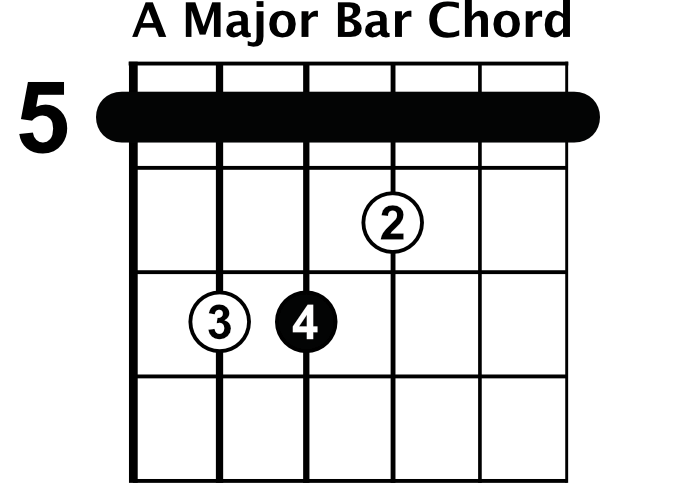Welcome to the sixth video of the Rhythm Guitar Quick-Start Series! In this lesson, we’re going to learn two different shapes for minor bar chords. These are really important to learn because in lesson seven you need to know these minor bar chord shapes so you can play through some of the more common chord progressions. These minor bar chord shapes should be easy for you to learn because they’re based off the two major bar chord shapes that you learned in the last couple of videos.
To get started, we’ll use our six-string E bar chord shape as our base, putting it on the fifth fret to make an A bar chord. To turn this into a minor bar chord, all you need to do is change one note. Simply take your middle finger off, and that changes this A major into an A minor bar chord.


Practice this a few times, while trying to remember all the tips I’ve given you to keep your chords clean sounding. You’ll notice when I take my middle finger off the string, it naturally comes back to help my index finger with the bar, making it a bit easier.
Basically, we just took an E major bar chord shape and turned it into an E minor, except we used a bar instead of open chords. Just like all the other bar chords you’ve learned, you can move this shape anywhere along the fretboard. You can look at your sixth string notes as a reference to find out which minor bar chord you’re playing.

If I move my bar up to the seventh fret and look at the note on the sixth string, I know this bar chord is a B minor using the E minor shape. Like always, try moving this shape around and remember that the name of the specific bar chord you’re playing comes from the lowest root note on the sixth string.
The next minor bar chord shape that we’ll look at comes from the open A major chord you learned earlier. Put the A major bar chord shape on at the seventh fret. This will be an E major bar chord because the root note on the seventh fret of the fifth string is an E.


Just like the last shape we learned, we only have to change one note, although this one isn’t quite as easy since we’ll have to change the fingering. The note you’re playing with your pinky on the ninth fret needs to move down to the eighth fret, and of course your pinky can’t move that way.
Instead, your middle finger will come back to the eighth fret of the B string, your third finger will grab the ninth fret of the D string, and your pinky will grab the ninth fret of the G string. Leaving the low E string out, this is the shape for your A minor bar chord. Since your index finger is on the seventh fret, this is an E minor chord using the A minor shape.
Get that shape down and then just like you did with your other bar chord shapes, practice moving it all around the fretboard. If you have trouble memorizing this shape, an easy way to remember it is to think of your sixth string root note major bar chord. It’s the same shape with your middle, third, and fourth fingers but the shape is moved over one string set.
Changing from the major bar chord to the minor bar chord is a good way to think about it. First get comfortable changing back and forth between the two, and then begin moving all around the fretboard. You can use the on-screen graphic again to reference the notes on the fifth string to see what chord you’re playing.
Thanks for watching this lesson. Take both of these minor bar chord shapes and move them up and down the fretboard. In the next video, using all the bar chords you’ve learned so far, we’ll play through some of the most important chord progressions you’ll need to learn as a rhythm guitar player. See you in the next lesson: Common Chord Progressions.
Next Lesson - Common Chord Progressions
